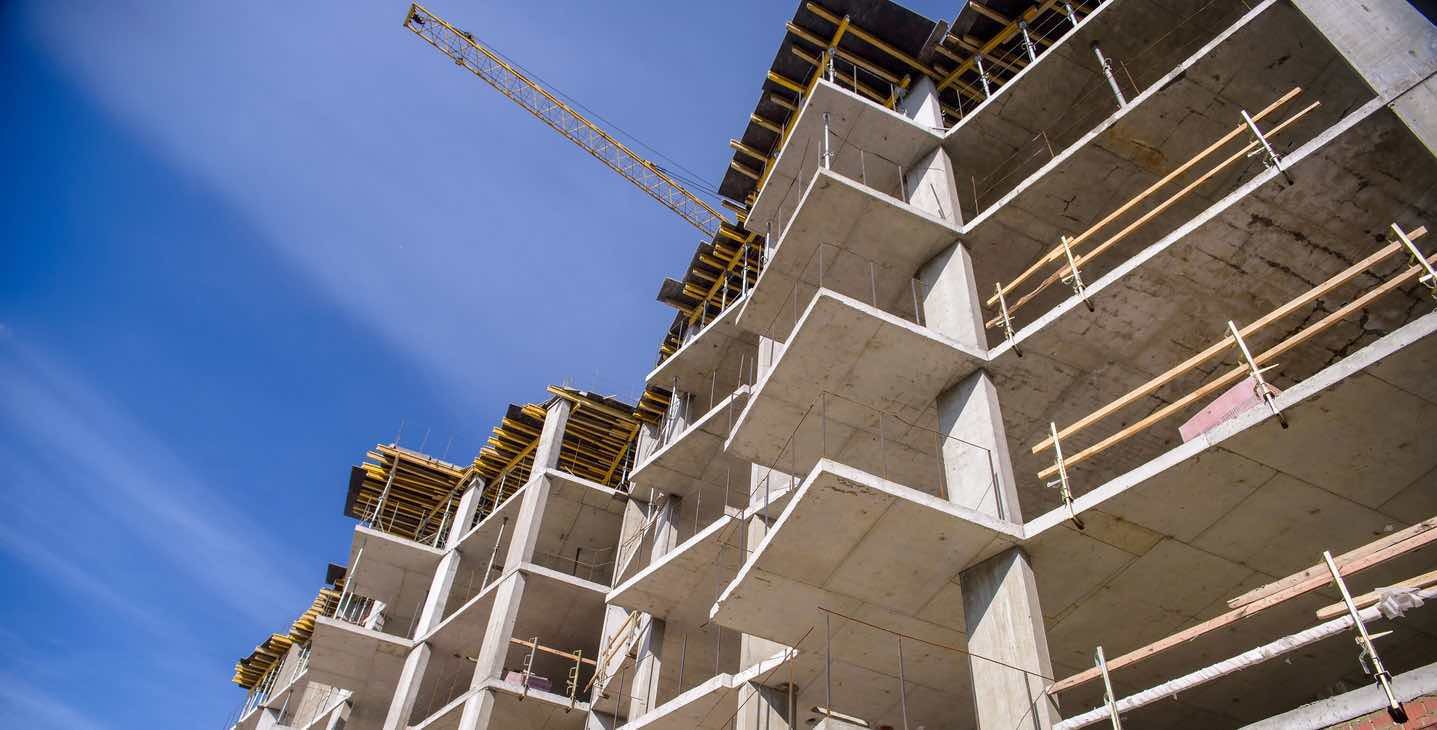Improving Multifamily Building Resilience In The Caribbean, Latin America And The United States
Written By Ricardo Álvarez-DíazABOUT THE AUTHOR | Ricardo Álvarez-Díaz is the founder and principal of the architectural firm Álvarez-Díaz & Villalón, with offices in Miami and San Juan, Puerto Rico.
As areas affected by recent hurricanes and earthquakes struggle to recover from the damage, demand for resilient multifamily housing capable of resisting natural and man-made disasters is expected to climb in coming years.
Given the power and magnitude of the quakes and storms, boosting multifamily building resilience in the Caribbean, Mexico and along the U.S. Gulf and Atlantic coasts is not an extravagance, but a necessity.
Toward a More Resilient Latin America and Caribbean
From 1990 to 2011, natural disasters cost the housing sector in 16 Latin American counties and the Caribbean at least $53 billion, according to a global assessment report published in 2013 by the United Nations Office for Disaster Risk Reduction.Lack of access to safer, affordable housing alternatives has forced 25 percent of the region’s population to live in substandard housing and informally built homes that are much more vulnerable to natural hazards. Public and private housing efforts traditionally have focused on quantity rather than quality, endorsing new housing construction and purchase subsidies while neglecting improvements to existing housing.In March last year, The World Bank gathered international experts and housing authorities from 14 countries—among them the U.S., Chile, Argentina, Colombia, Peru, Honduras, Mexico and Jamaica—in Washington, D.C., to discuss how to improve housing affordability and resilience in order to mitigate increasing climate and disaster risks. They came up with several recommendations:
Align structural retrofitting efforts with better incentives for home/building owners.
Proactively engage finance institutions to increase affordability and improve building resilience.
Link housing policies and improvement efforts to both affordability and energy efficiency.
FURTHER READING: RESILIENT DESIGN PROTECTS AGAINST NATURAL DISASTERS AND ACCELERATES RECOVERY
Designing for Multifamily Building Resilience
Resilient multifamily housing calls for innovative design approaches and construction methods that can tackle both acute shocks (hazard events) and the chronic stresses that stem from the gradual and perpetual disruptions that reduce a community's ability to recover from disaster.Affordable housing and community development advocate Enterprise Community Partners recently published a collection of strategies for making affordable multifamily housing more resilient against the effects of extreme weather events. Based on the advice of 50 technical experts, the manual—“Ready to Respond: Strategies for Multifamily Building Resilience”—is a guide for building owners on retrofit strategies to help adapt and protect their properties against a variety of climate hazards.Improving multifamily building resilience poses significant design, cost and safety challenges, but the costs associated with disaster recovery—response, repairs, reconstruction, etc.—can be as disastrous as the natural hazards themselves. The old adage stands true: better safe than sorry.
THE COSTS ASSOCIATED WITH DISASTER RECOVERY CAN BE AS DISASTROUS AS THE NATURAL HAZARDS THEMSELVES. THE OLD ADAGE STANDS TRUE: BETTER SAFE THAN SORRY.
Strategies for Resilient Multifamily Housing
multifamily building resilience
Not every housing unit or development is the same nor does it requires the same design and construction approach. Following are some the strategies designers and builders can use to improve multifamily building resilience.
Protection strategies to reduce a building's vulnerability to extreme weather.
1. Wet Floodproofing
Allows unoccupied portions of a building to be flooded during a storm by letting water flow through the building in a controlled way.
2. Dry Floodproofing
Seals buildings to keep water out and prevent damage to critical systems and mechanical equipment, reduce recovery time and deter mold growth. There are two types of dry floodproofing: active and permanent. Active measures require removable elements to be put into place before an anticipated flood. Permanent measures are fixtures and systems integrated into the structure itself that do not need to be manually deployed in the event of an emergency.
3. Site Perimeter Floodproofing
Deploying temporary (sandbags, water-inflated tube systems) or permanent (floodwalls, berms) physical barriers to prevent floodwaters from reaching a building. Does not require modifications to the building structure.
4. Resilient Elevators
Elevators are often the only way residents have to reach higher floors, making them a critical building system. They are vulnerable to flood damage because elevator pits typically extend well below the lowest floor. Several techniques can make them more resilient.
5. Backwater Valves
Sewage backflow occurs when storm water backs up into a building basement because of sewer line blockage or storm drain overflow due to flooding. A backwater valve is a relatively inexpensive retrofit that can prevent significant problems from sewer line failure by blocking reverse flow from entering the building through wastewater pipes.
6. Sump Pumps
multifamily building resilience
These remove water that accumulates in the low points in a building, typically the basement. They are an effective and affordable way to reduce costly flood damages.
Adaptation strategies to improve a building's ability to adapt to changing climate conditions.
1. Envelope efficiency
A high-performance envelope is very valuable during a power outage because indoor temperatures change more slowly, increasing a building’s “passive survivability.” The thermal performance of a building envelope depends on its insulation value, air leakage and thermal bridges.
2. Elevated Equipment
With more extreme weather events causing coastal flooding, elevating or relocating mechanical and electrical equipment out of flood-prone basements and lower floors increases building resilience. Critical equipment can be elevated in place or moved to higher floors, the roof or an outdoor platform.
3. Elevated Living Space
Abandoning floors below the design flood elevation or using them for a non-residential purpose can limit damage to critical equipment or living space during a flood. By eliminating living spaces and mechanical systems below the base flood elevation and incorporating wet floodproofing measures, buildings may become eligible for lower insurance rates.
4. Surface Stormwater Management
Stormwater is a major cause of urban flooding, especially in cities with combined sewer and stormwater systems. Most water treatment systems cannot handle additional volume during a large storm. Infiltrating water into the ground on-site reduces the need for large infrastructure projects and can ease flooding, speed recovery after a storm and reduce sewer backups.
5. Window Shading
Exterior or interior window treatments that shade rooms can lessen solar heating in the summer and insulate against heat loss in winter.
6. Distributed Cooling and Heating
multifamily building resilience
Decentralized and high-efficiency heating and cooling systems distributed throughout a building can help avoid flood damage while lowering operating costs. Distributed systems are most effective in buildings with high-performance windows and well-insulated, airtight envelopes.
Backup strategies that provide critical needs for when a building loses power or other services.
1. Maintaining Backup Power to Critical Systems
During a power outage, backup power is vital to continue building operations and make repairs during and after a storm event. Consider the needs of your site when selecting a backup power generator, including the location where it will be installed, fuel storage issues, the amount of emissions it will produce and your budget.
2. Emergency Lighting
Building codes generally require only 90 minutes of emergency illumination. Different lighting strategies—such as natural light, battery- and solar-powered emergency lighting—are necessary to keep buildings operating safely during and after emergencies.
3. Access to Potable Water
A reliable source of potable water is essential if a building is to remain livable during a power loss. Taller multifamily buildings typically use rooftop water tanks, rainwater storage tanks, pressure-booster pumps, critical load circuits (for the water pump and power generator) and water efficiency measures to keep the water flowing.Other strategies that can improve multifamily building resilience include sea walls, elevated post-tension concrete design, missile-impact glass and subterranean concrete pilings.Sources: The World Bank, Enterprise Green Communities, Resilient Design Institute.




